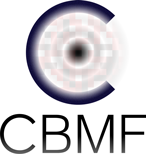Most of the post-processing and handling of lattice light-sheet data is performed on the CBMF server, and you can perform many basic post-processing tasks yourself by logging into the server. Here is an example workflow:
Note: bolded lines like this are links to expanded detail in the FAQs explaining that step.
- In your terminal application, log in to the CBMF server:
ssh uname@cbmf-latwork.med.harvard.edu- if you’d like to view images remotely using
llsinfo --show, use X11 forwarding:ssh -X uname@cbmf-latwork.med.harvard.edu
- Use basic Linux commands to navigate the server directories… most data lives in the
/lattice/data_sharedirectory, so to change to that directory:cd /lattice/data_share
- View the contents of the current directory:
ls
- Use the
llsinfocommand to get info about Lattice Light Sheet data inside a directory:llsinfo /path/to/directory
- (If you need a reminder about LLS data folder structure, see this page)
- You can also use the
llsinfocommand to preview images remotely, for instance:- To view MIP file:
llsinfo /path/to/directory --showmip - To view Z stacks:
llsinfo /path/to/directory --showz 0
- To view MIP file:
- The
llscommand is the main function that let’s you work with Lattice Light Sheet data. Get help on thellscommand line program:lls -h
- Let’s say you wanted to process/reprocess (deskew and deconvolve) the directory
path/to/cell1, preserving the deconvolved files and applying the camera pixel correction, while compressing the raw data following processing. You might enter the following command (the--reprocessflag is only necessary if it’s already been processed once before and has aProcessingLog.txtfile in the directory):lls -i 10 -C -z path/to/cell1 --reprocess
- This will take a while, and you can see the progress in the terminal window… In the future, you might rather use
--batchprocessing mode to deskew/deconvolve all of the LLS datasets recursively within a specific top level directory:lls --batch -i 10 -C -z /top/level/directory
- When everything is done processing, you may want to retrieve some or all of the data. For instance, you might just want to see the max-intensity-projection in the
GPUdeconfolder… so you can use one of a few methods to transfer files from the server. Beware, depending on the amount of data, this may take a very long time over slower connections (and you may be better off coming to the CBMF with an external hard drive). - When you’ve copied all of the processed data to another location, it helps us out a lot if you can “freeze” your dataset for long-term storage. This deletes the deskewed and deconvolved data, retaining and compressing only the raw data (which can be reprocessed later to recover everything). This uses as much as 40 times less hard drive space.
llscompress --freeze path/to/cell1
